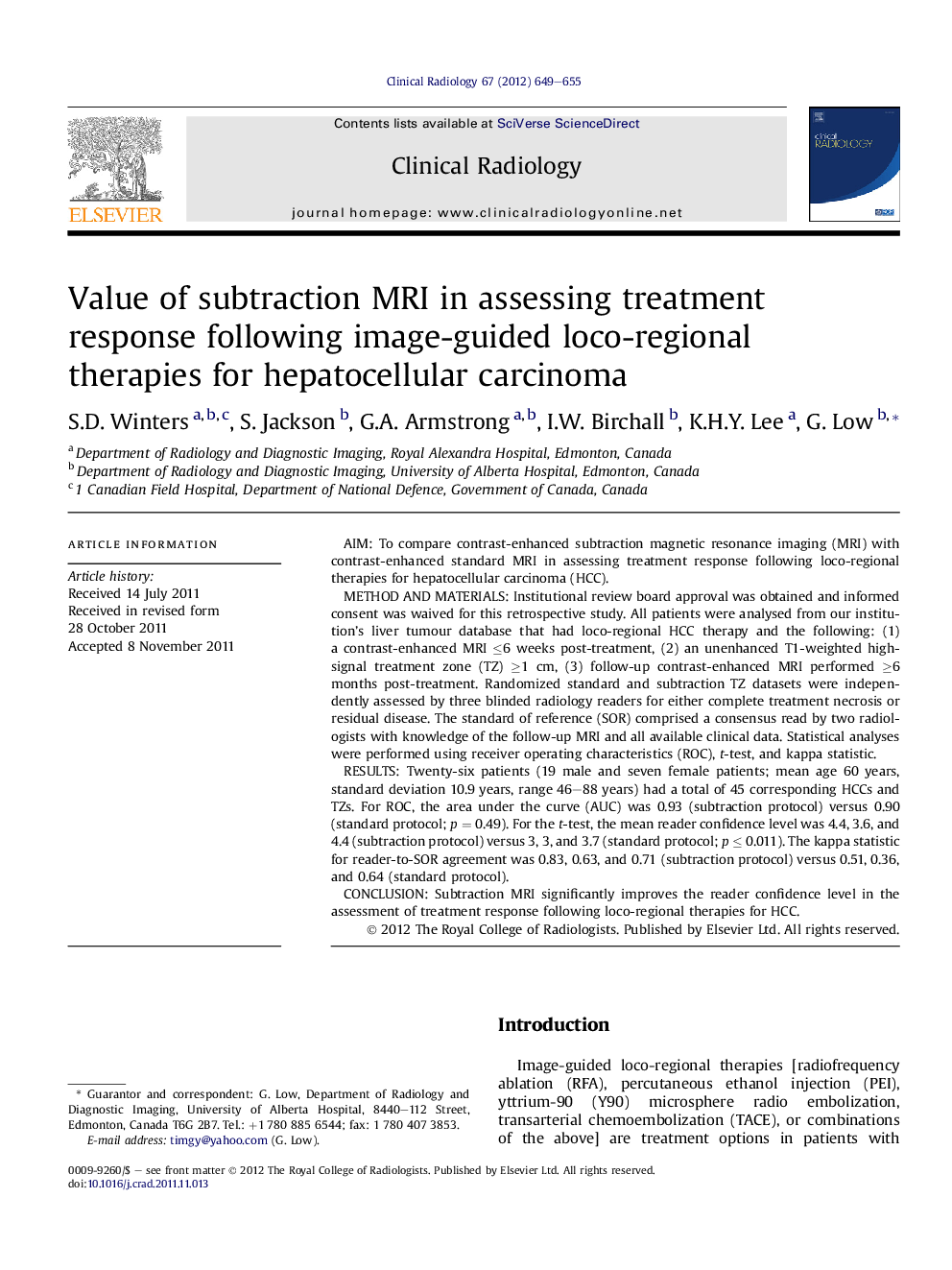| Article ID | Journal | Published Year | Pages | File Type |
|---|---|---|---|---|
| 3983210 | Clinical Radiology | 2012 | 7 Pages |
AimTo compare contrast-enhanced subtraction magnetic resonance imaging (MRI) with contrast-enhanced standard MRI in assessing treatment response following loco-regional therapies for hepatocellular carcinoma (HCC).Method and materialsInstitutional review board approval was obtained and informed consent was waived for this retrospective study. All patients were analysed from our institution’s liver tumour database that had loco-regional HCC therapy and the following: (1) a contrast-enhanced MRI ≤6 weeks post-treatment, (2) an unenhanced T1-weighted high-signal treatment zone (TZ) ≥1 cm, (3) follow-up contrast-enhanced MRI performed ≥6 months post-treatment. Randomized standard and subtraction TZ datasets were independently assessed by three blinded radiology readers for either complete treatment necrosis or residual disease. The standard of reference (SOR) comprised a consensus read by two radiologists with knowledge of the follow-up MRI and all available clinical data. Statistical analyses were performed using receiver operating characteristics (ROC), t-test, and kappa statistic.ResultsTwenty-six patients (19 male and seven female patients; mean age 60 years, standard deviation 10.9 years, range 46–88 years) had a total of 45 corresponding HCCs and TZs. For ROC, the area under the curve (AUC) was 0.93 (subtraction protocol) versus 0.90 (standard protocol; p = 0.49). For the t-test, the mean reader confidence level was 4.4, 3.6, and 4.4 (subtraction protocol) versus 3, 3, and 3.7 (standard protocol; p ≤ 0.011). The kappa statistic for reader-to-SOR agreement was 0.83, 0.63, and 0.71 (subtraction protocol) versus 0.51, 0.36, and 0.64 (standard protocol).ConclusionSubtraction MRI significantly improves the reader confidence level in the assessment of treatment response following loco-regional therapies for HCC.
